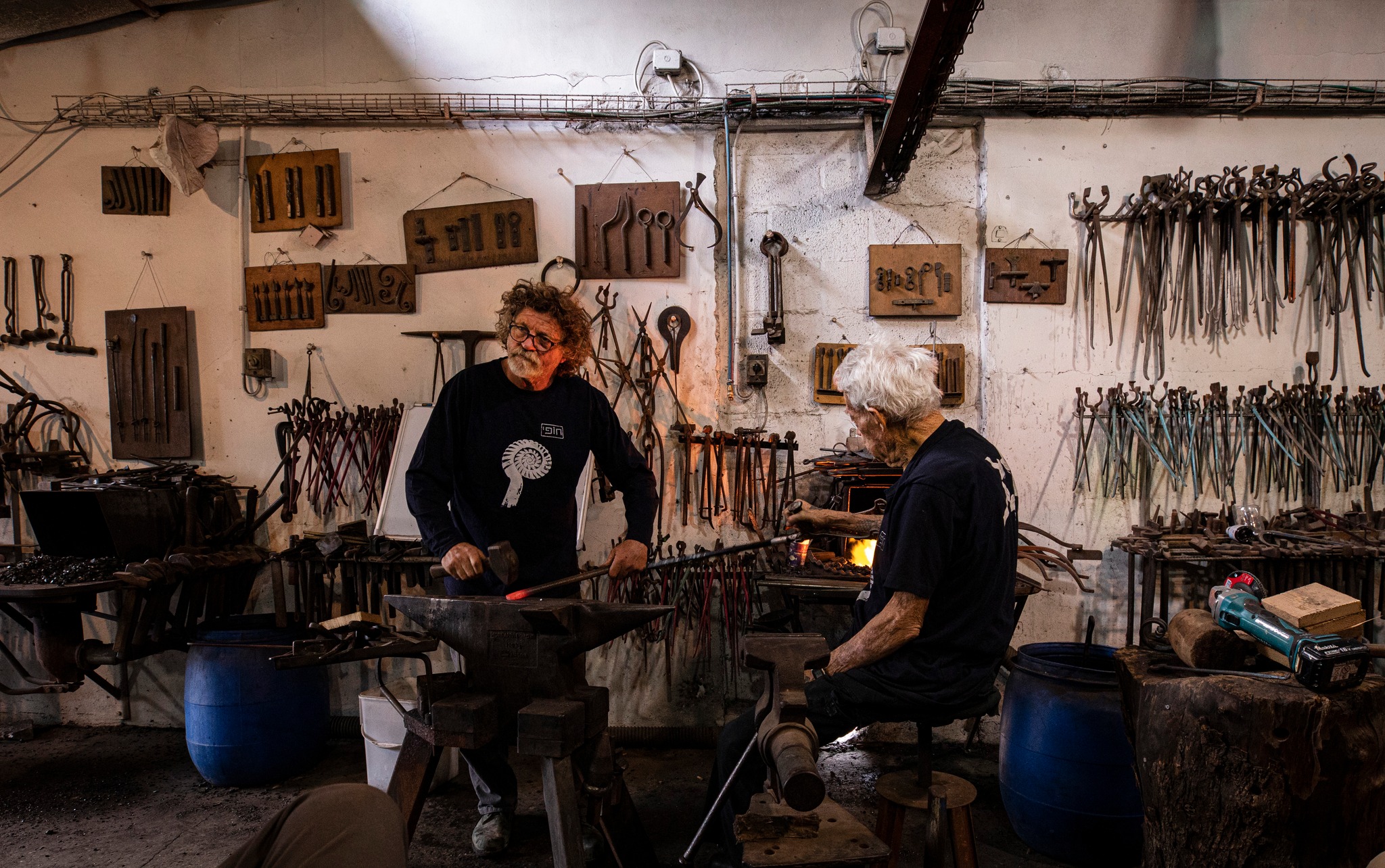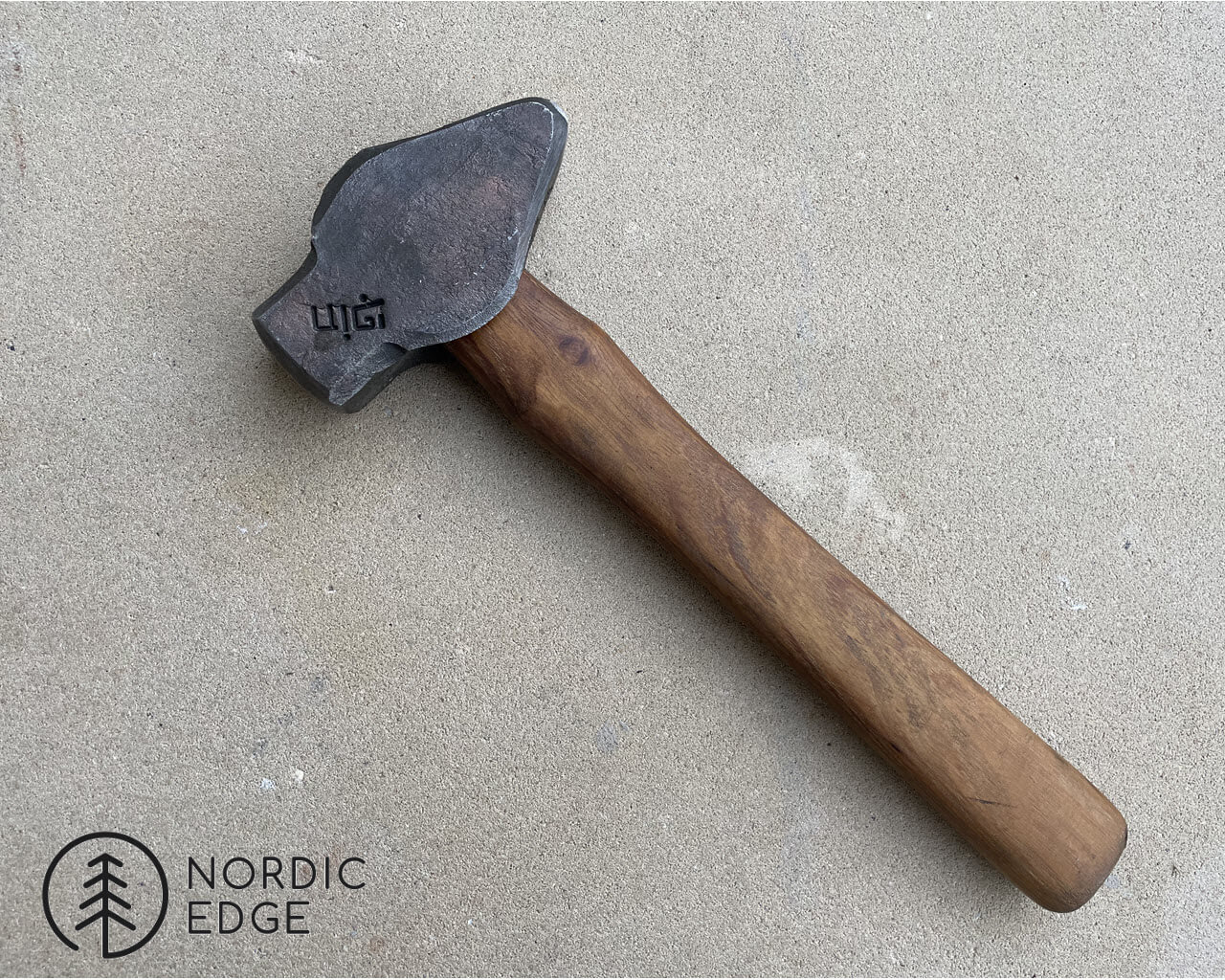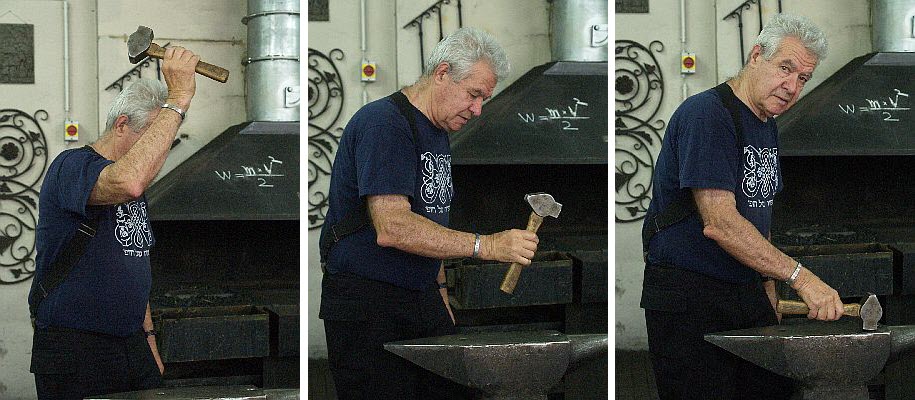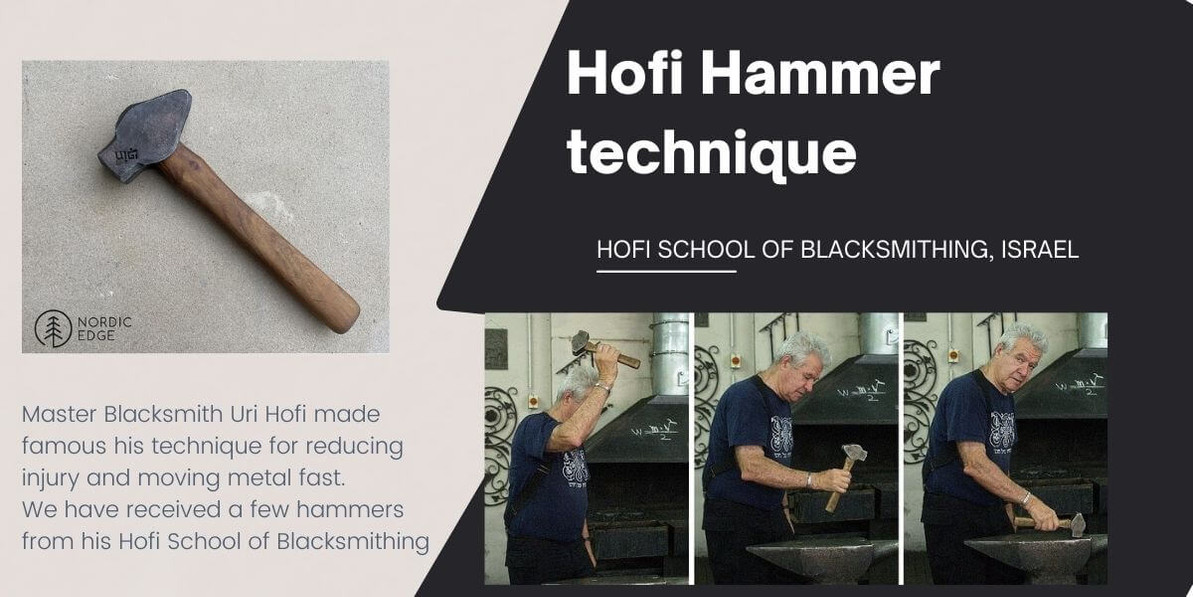Hofi Ergonomic Technique for Moving Metal - save your arm
Uri Hofi is a Master Blacksmith from Israel who became quite famous in the blacksmithing world when he travelled internationally and demonstrated his "Hofi Ergonomic Technique for Moving Metal".
Hofi's technique was based on finding ways to work that was easier on the body, reducing or removing the strain forcing many blacksmiths and knife makers to stop forging after a while. Hammering while death gripping a hammer and the vibrations shooting up the arm has caused many a smith up through the ages grief.
Hofi marketed his system - and the hammer style he developed for his system - for many years, turning it into some DVDs, two anvil designs, the hammer as well as the Hofi School of Blacksmithing in Israel.

Today Hofi is retired and no longer making his hammers, but Boaz Yakin who have worked with Hofi for many years has been allowed to continue using Hofi's name and making the hammers in Israel still. In October 2022 we received a batch of Hofi hammers from Boaz, check them out here: (*** SOLD OUT ***)

What brought Hofi's "instant fame" in the US was not only that his method promised old smiths they could take up a hammer again, but the fact that he at over 50 years old could move metal faster than "any other smith there" - and do it from morning to night while talking and demonstrating..
The proof of the pudding is in the eating, as they say and Hofi's hammers and techniques made a name for themselves. Locally in Australia, Wayne Schmidt from Cracked Anvil Forge is maybe the best known smith using the Hofi hammering technique and always happy to give some pointers when seeing him at a market.
Here is a quote from a user on iForgeIron.com calling himself Firebug who witnessed the Hofi style and demonstrations, becoming a fan:
"In the Hofi method you use a loose grip with the palm down towards the anvil. Your thumb is along side of the handle more than it wraps around the handle. You use the thumb and first 2 fingers for most of the grip. The last two fingers are more to control the handle of the hammer as it pivots in your hand.
You grip the hammer 2-3 inches behind the hammer head and allow the hammer to pivot in your hand at that point. By doing this you have created 4 points of movement in the arm that swings the hammer.

Photos by Johannes Angele, downloaded from iForgeIron.com
The shoulder, elbow, wrist and between the thumb and first two fingers. This allows greater velocity in the hammer head JUST prior to striking the iron as it pivots in you hand. This is where a lot of the energy is produced. For a given hammer weight, the higher the velocity the more work you produce.
Like I said before a lighter hammer can produce more work by simply traveling at a higher velocity than a heavier hammer. I am not talking about a 1 pound hammer compared to a 5 pound hammer, rather a 2.75 compared to a 3 or even a 3.3 pound hammer. Velocity cannot overcome everything.
By holding the hammer palm towards the anvil face, you are moving your wrist in a more natural and less restrictive manner and are less likely to injure that joint. In the Hofi method the hammer is tilted to forge with greater speed. An unbalanced hammer will deflect to the side. Emphasis is placed on knowing your hammer and how to use every part. The hammer and anvil are used in conjunction with each other with great effect and is taught with emphasis.
Standing at the anvil
This is going to be hard to explain but I will do my best. Watch how many smiths work and you will see that they stand directly beside the anvil. They face the anvil and their managing hand is at their crotch. This causes them to have to lean over their managing hand and work to see where they are striking. This makes it harder to work and is very hard on the body.
In the Hofi system you stand to the side of the anvil but off center some to the rear. You do not directly face the anvil and your managing hand is in front of you allowing the work piece to pass in front of you. The front of your body faces more in the direction the horn is facing.

Now you can see where you are striking without looking over your managing hand or work. Your back is not constantly worked from excessive leaning.
As far as learning it, in my opinion it is not harder to learn than any other method. If you are a beginner I think you have an advantage because you have not learned any other way of doing it. You are starting fresh. If a person has been smithing for several years then there is no doubt that they may have to overcome some habits formed early on. I have been around blacksmithing for several years have many friends who are blacksmiths and learned a little about the so called traditional way. I know enough that in my mind I believe my body will last much longer using the Hofi method as compared to what is traditionally taught. Once you learn to forge with the Hofi hammer, using his striking technique, you can adapt it to anything you are taught. In other words, making scrolls, dragon heads, leaves, drawing a point etc.
The reason the Hofi technique is so ergonomic is because the body was given number one priority over most any other aspect of blacksmithing while he was developing his style.. Remember Hofi was 52 when he started blacksmithing, he had to consider how it would effect his body. So every consideration was given to standing beside the anvil, holding the hammer and swinging it. When the hammer heads are attached to the handles a compound call Sika Flex is used. It gives some shock absorption between the hammer head and wood handle. It is little things like that when the totality of everything is considered that makes him different from many smiths out there. He uses a VERY light grip, just guiding the hammer, doesn't bend over the anvil, NEVER places the thumb on top of the hammer, allows the natural rebound to assist him in raising the hammer. Something you cannot do to a great affect with your thumb on top.
"
Here is another article from iForgeIron.com from the man Uri Hofi himself with some photos and his own description of the technique: LINK
UPDATE 2023: We now stock a higher quality hammers in the hofi style made by Northern Iron Forge in Queensland, check them out here: LINK
They are not made by the Hofi school of blacksmithing in Israel but the level of finish is higher. The head is set with sikaflex on the handle like the ones from Israel but they are more uniformely finished with a polished face and peen.

Recent Posts
-
Why Bed The Tang In Epoxy - Then Knock it OFF Again.
What is "Bedding the tang"? Bedding the tang means gluing a stick-tang blade into the handle block i …21st Mar 2025 -
Marble Leather - How to Dip Dye Veg Tanned Leather
This was my first experiment with hydrodipping or dip dying leather, and it came out pretty cool! I …14th Mar 2025 -
Make Burl Wood POP!
Staining wood with leather dye. or "How to make burl wood really pop". This technique really only wo …8th Mar 2025




